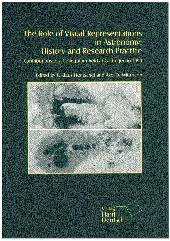
Astronomy would not exist without nonverbal representations: With the majority of celestial objects perceptible to us only by the light or radiations they emit, images of all kinds have always played a central role in the history of astronomy. From prehistoric sketches of the moon with a supernova or bright planet, star-charts in temples and tombs of the Ancients, celestial and lunar maps from the Middle Ages to modern photographs and spectrograms of sun, moon, and planets, two-dimensional images and three-dimensional models have always been an integral element of astronomy. Added to these are a variety of more technical charts and graphs, like the Hertzsprung-Russell diagram, the Maunder-type solar activity diagrams, the light curves of variable stars, the spectral atlases of the sun and the brightest stars, and so forth; and more recently, of course, there are the spectacular images obtained from large ground-based telescopes, satellite observatories, and deep space probes.
This intimate relationship between science and image is not as straightforward, however, as it might at first seem. How direct is this graphic conversion of the subject of observation or registration by man or machine? What problems emerge in the translation process? Does this endless quest for ever better representational forms and ever better resolution have repercussions on the research practice? What is the impact of technological developments? How do astronomers and astrophysicists interact with their illustrators, engravers, lithographers, photographers and other graphic arts specialists? And how can these visual records from the past best be preserved?
This collection of papers, which - with one exception - were presented during a one-day international conference at the Göttingen University Observatory on 20 September 1999, offers answers to some of these questions. This volume is intended for those interested in the development of visual representations or the history of astronomy.
Texts in English.